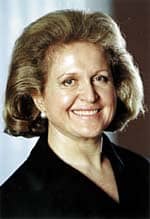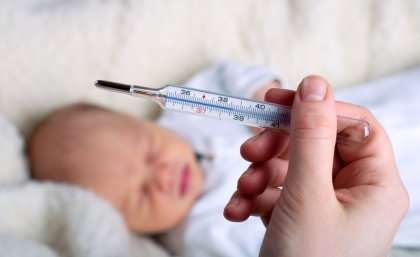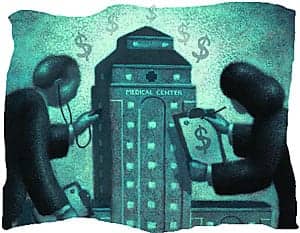RTs in Action

Respiratory therapists who volunteer time and hard work in countries such as Zanzibar are paid overtime in the many lives their efforts help to save.
As the car rambled through the mass movement of people, cars, bikes, and “dali-dali” buses, Dr Jamala handed me statistical information from the intensive care unit (ICU) at Mnazi Mmoja Hospital, where I would be teaching classes and conducting training sessions on new ventilators and CPAP machines for the next week. Of the 263 critical patients admitted last year, 53% of them died. Does this figure sound high? In 1998, when we started preparing for building and supplying a modern ICU in Zanzibar, Africa, the death rate for critical patients was 97%. These patients had needed mechanical ventilation and respiratory therapists. They had congestive heart failure, pneumonia, strokes, myocardial infarctions, and chronic diseases such as untreated hypertension and untreated diabetes. They needed doctors who could lead teams in code blue CPR situations. They needed advanced life support. But none of this was available then in this remote part of the world. Now, only 4 years later, nearly half these patients survived—in 2002, 123 critical patients were saved, 40 of them children.
This small island has a rich history. The Sultan of Oman moved south to Zanzibar when his own brother conspired against him in the 1800s. The largest trade in slaves and spices was conducted on the island. Explorer David Livingstone had a home here and launched his epic adventures from this sunny place. After the slave trade was abolished, the Church of England turned the old slave market into a church. The old slave block has been turned into an altar. The island’s population is 99% Muslim, however, and the town echoes with the sounds of daily calls to prayer; the beautiful mosques are full of people practicing their faith. Sunrise and sunset are always outstanding, and the trade winds blow to soften the steady warmth felt so close to the equator. The Arabic presence is seen in the architecture and layout of Old Stone Town, with its narrow winding streets, as well as the conservative dress of the local people.
Nothing But Heart
Over the past 9 years, I have been around many places of need—Magunga Refugee Center in Zaire, Nicaragua after hurricane Mitch, Rwanda, Vietnam—but when I first saw the raw hospital at Mnazi Mmoja, I was shocked. It was rich in many ways: its doctors and nurses were dedicated and committed to saving lives, but they had no tools or supplies. They had heart but lacked the advanced training that we in the United States take for a given. They had no ventilators or cardiac monitors, no pulse oximeters or respiratory supplies. Everything was multi-patient use—including needles. There was no laboratory. There was one old x-ray machine. All medicines had to be purchased by the family at a local pharmacy and brought to the hospital, as did all the patients’ food. Some wards had no soap or hand-washing facilities. There was no central supply, no sterilization area for equipment. The walls and floors were covered with blood, vomit, and excrement. The stench in some wards was overpowering, and the general lack of order was upsetting for the patients and their families, as well as the caregiver, creating a general feeling of hopelessness and despair.
Imagine having the power supply fail and losing all your patients on mechanical ventilation. Imagine running out of oxygen and having no medical gas available—ever. Imagine having few supplies, no support network. This is a reality for these doctors and nurses, even after 5 years of development. These doctors have hearts of gold and the dedication and stamina not to give up. They maintain a disciplined focus to best make do with what supplies they have available and complete the task. I am constantly amazed at their attitude, grace, and perseverance.
In 1999, we installed basic ventilators and had put in a central monitor station and telemetry system. We gave them defibrillators and crash carts full of supplies. They now had 100% more of everything we use in our own day-to-day jobs. And people started to live. The training had worked; the ventilator management classes we taught were helping them learn a new trade: respiratory therapy. Over the next 4 years, the room of death, as they once had called the old ICU, became the room of life.
True Change
Every year I led an interdisciplinary medical team back to the island. The level of sophistication the health practitioners developed as caregivers impressed me. I could see a real difference in the quality of their care, in their hopes for their people, and in their own ownership of the ICU. It is awesome to be part of true change.
As Dr Jamala and I made our way to our first session of classes, and I looked at those records and saw that we had helped save 123 people in 2002, I knew it had been worth it. Could we change the world? Could a bunch of grassroots volunteer individuals make change and improve people’s lives? Yes, we could. In 4 years, more than 700 critical patients had lived and had made it out of the room of death. The people on this island maintain close relationships with family and extended family. Each life saved affected many people. The whole island had been changed.
Even in times of fear, times of war, health care practitioners can always find common ground. Muslim, Christian, black, or white, the common ground of saving lives bridges communities, bridges countries, and bridges cultures. Love is always universal. So, as Dr Abdullah drove me to the airport for my flight home, I committed to another project back to Zanzibar, to continuing our exchange of knowledge and supplies. How could I not continue this work with its exciting results? My efforts seemed so small when faced with the awesome successes. Dr Abdullah talked about taking the program over to Pemba Island and sharing the supplies they now possessed; we had come full circle. The locals had ownership; the locals now were ready to share and train others.
Brian P. Shirley, CRT, is a respiratory care practitioner at Mercy Medical Center, Mt Shasta, Calif, and International Director of RTs in Action. For more information about RTs in Action, send a fax to him at (530) 235-4346.










